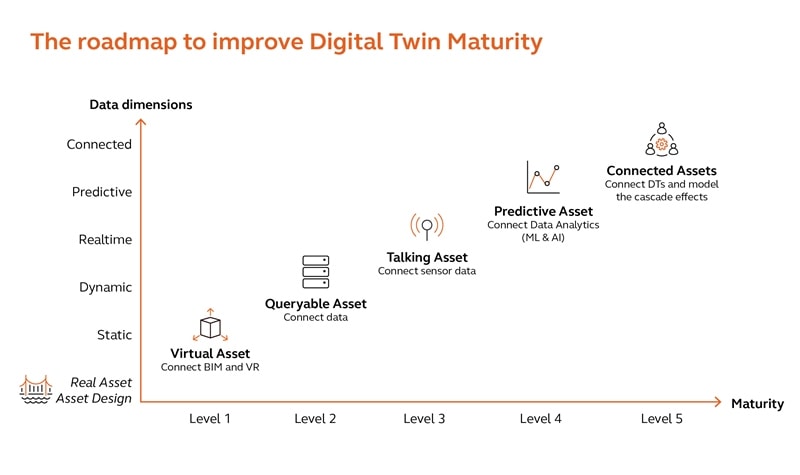At Arcadis, we have been using Digital Twin functionality for a number of years now. This platform combines, enriches and visualizes data sources, leading to new insights and enabling customers to make better decisions. In this blog, I explain exactly what Digital Twins are, the different levels they can have and why this tool is such a good fit with our key objective.
Arcadis’s motto is ‘Improving quality of life’ and this is my personal motivation too. My aim is to contribute to a better world, for example in the field of mobility, by building an infrastructure that ensures that we can move around safely with minimal impact on the environment. Digital Twins can make a significant contribution here.
The Various Levels of Digital Twins
A Digital Twin is a virtual representation of reality, with virtual reality enabling you to ‘walk around’ it. We can enhance this environment using a wealth of data on different levels, which also determines the degree of interaction. It starts with a virtual asset based on a BIM (building information model). You can then add information to this, starting with queryable assets, such as manuals and maintenance reports that can be requested by clicking on a particular section. On the next level are the talking assets, with sensors collecting and delivering real-time information. This provides such a wealth of information that you can create artificial intelligence predictions using machine learning. You can then predict unsafe situations, for example or carry out maintenance in good time. If you place a predictive asset of this kind in its environment, then you have connected assets — such as a tunnel with roads, bridges and viaducts. This is the most advanced Digital Twin level.

What Is Arcadis Doing in This Field?
In addition to mobility, Digital Twins are ideal for buildings and resilience, i.e. water and the environment; for example in stress tests in cities, wastewater treatment plants and designing port areas. Arcadis is already using this technology in all these areas and we have been able to demonstrate the added value to our customers. A perfect example is the Waterwolf tunnel, which we operate and maintain in association with the province of North Holland. We use various Digital Twin applications here, such as visualizations, simulations and data enhancement. These allow us to carry out various tasks, including ensuring better traffic flow, monitoring the condition of the tunnel and the systems, and keeping track of environmental pollution. Our aim, for example, is to be in a position to predict unsafe situations in changing weather conditions and to provide drivers with the correct information to get to their destination safely. The possibilities are endless.
The key to the level and implementation of the Digital Twin is the information required by customers for optimum business operations in areas such as capacity, safety, accessibility, cost savings and the environment. We work with them to establish what information they need; for example for quick, safe relocations with efficient use of fossil fuels and raw materials, with minimal impact on the environment. It is up to Arcadis to define and add any missing information. In order to achieve this, we maintain an ongoing dialog with customers. As far as I’m concerned, co-creation and Digital Twins go hand in hand.
To find out more about Digital Twins, our BIM workflows and Operate & Maintain dashboards, do get in touch or visit our website!






